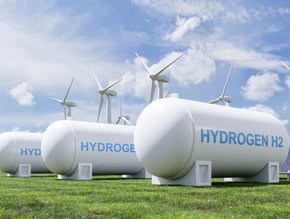Oracle creates the Smithsonian Future of Energy experience

A collaborative effort must be taken to make a significant impact on the climate. But, how do organisations educate individuals to adapt their everyday lives for a more responsible existence?
Oracle is teaming up with the Smithsonian Institutions, the world’s largest museum, education, and research complex, to do just that. Oracle will play a significant role in educating the public to reduce their dependence on energy, by contributing to the FUTURES experience, which will open on the 20th November 2021 at the Arts and Industries Building (AIB) and will last until July 2022. The Future of Energy experience is a virtual reality (VR) programme that is designed to provide insight into the past (1850), present and future (2050) of clean energy.
Curator of Smithsonian’s AIB, Ashley Molese, says, ‘While energy is one of society’s most critical resources, its future has never been more in question as we look for ways to promote a cleaner tomorrow. [...] This project helps inspire a critical exploration of what’s possible by illuminating how increased renewable energy usage can create a sustainable energy future, and how collectively changing our behaviours can make a meaningful net-zero impact by 2050’.
The project marks the Smithsonian’s 175th anniversary and the first major building-wide display of future developments and technologies as the institute temporarily reopens its oldest museum.
How will Oracle contribute to the Future of Energy experience?
One of the ways that individuals can contribute to the climate crisis is by reducing their energy consumption. The Future of Energy VR experience will ‘walk’ viewers through two centuries of energy development and encourage them to think about the way they consume electricity. Things like washing clothes at lower temperatures or reducing thermostats by a few degrees are small steps that people can take to make a collective impact on the environment. Other insights from the VR experience include:
- Improved weatherproofing to mitigate leaking windows
- Upgrading appliances to less energy-intensive models
- Swapping out light bulbs
- Replacing heating solutions
- Switching off devices instead of leaving them on standby
- Making drink choices based on their contributions to carbon emissions
- The effects of walking or cycling on shorter trips instead of driving
‘Small actions today can have a big impact on tomorrow, and a sustainable energy future requires eliminating carbon emissions from our global energy system’, says Hillary Martin, Vice President, Oracle Utilities.
‘Countries around the world have committed to achieving aggressive decarbonization or net-zero carbon emissions by 2050. The electrification of transportation and transition to more renewable energy sources, such as wind and solar, will help us achieve these goals. But we also need the power of people changing their habits. This interactive is designed to show that everyday actions can be part of the climate change solution’.
For more energy insights, check out the latest issue of Energy Digital Magazine.






